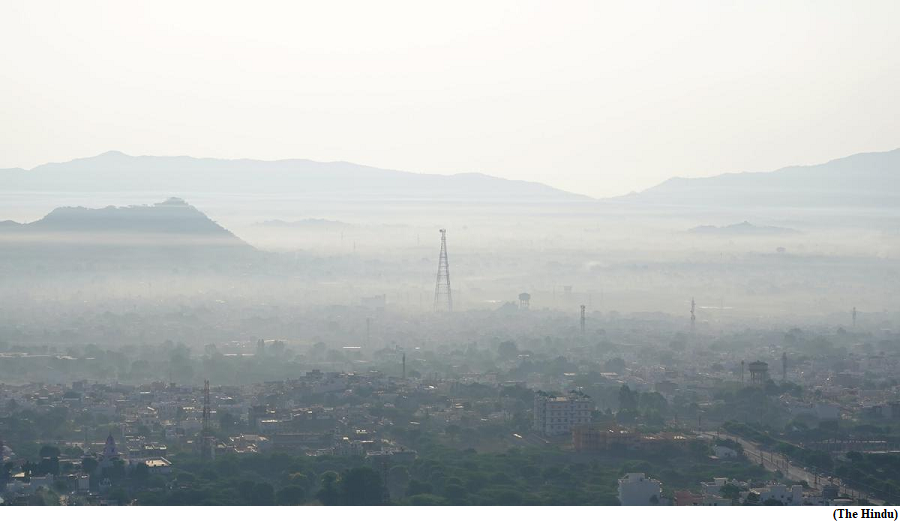UAE emerges fourth largest investor in India, FDI jumps over 3x in FY23 (GS Paper 3, Economy)

Why in news?
- The United Arab Emirates (UAE) has emerged as the fourth largest investor in India during 2022-23.
Details:
- In the last fiscal, foreign direct investment (FDI) from the UAE to India jumped over three-fold to USD 3.35 billion from USD 1.03 billion in 2021-22, the data of the Department for Promotion of Industry and Internal Trade (DPIIT) showed.
- The UAE was the fourth largest investor in India in 2022-23 compared to the seventh in 2021-22.
- Singapore was the largest investor in India with USD 17.2 billion investment in FY23, followed by Mauritius (USD 6.1 billion) and the US (USD 6 billion).
Factors responsible for UAE investments:
- UAE's investments in India are mainly in sectors like services, sea transport, power and construction activities.
- One of the crucial factors for the increase in foreign direct investment (FDI) from UAE is the signing of the Comprehensive Economic Partnership Agreement (CEPA) between India and UAE on February 18, 2022 (effective from May 1, 2022).
- Under the pact, a number of goods from both countries are getting zero-duty access to each other's markets, besides eased norms for promoting investments.
- The country accounts for about 2.5 per cent of the total FDI India received between April 2000 and March 2023. During this period, India has attracted USD 15.6 billion worth of overseas inflows from the UAE.
- Apart from CEPA, another growth engine of FDI from UAE in India is the investment commitment from UAE. UAE has committed to invest USD 75 billion in the Indian infrastructure sector over a period of time. It has also committed to partner with India in the renewable energy sector.
Innovation Program:
- Among other agencies, Abu Dhabi Investment Office through their Innovation Program is providing active support to innovation-driven startups through financial and non-financial incentives like information on data, network, licensing, logistics, real estate, visa etc.
- Such expansion ideas/ activities of Indian startups also provide an incentive to UAE-based investment funds to invest more in innovation-based startups in India.
Centre to complete 3D digitisation of museums by year-end
(GS Paper 3, Science and Tech)
Why in news?
- The Union government plans to complete 3D digitisation of all museums under its administrative control by 2023-end for better conservation of artefacts.

Details:
- They include the Salar Jung Museum, Hyderabad, the Allahabad Museum in Prayagraj, the Indian Museum, Kolkata, the Victoria Memorial Hall, the National Museum and the National Gallery of Modern Art.
- The Culture Ministry has 10 museums within its ambit, including those mentioned above. Apart from these, the Archaeological Survey of India has site museums at 44 locations spread throughout the country in proximity to key archaeological sites.
Significance:
- Besides aiding conservation, 3D digitisation of the museums can offer visitors new ways to access and explore the collection. 3D models can be used in augmented reality and virtual reality learning experiences, and facilitate 3D printing.
- The digitisation process involves 3D scanning which means analysing a real-world object or environment to collect three-dimensional data of its shape and possibly its appearance. The collected data is then used to construct digital 3D models.
Implementation:
- The entire process was being carried out by the Ministry of Electronics and Information Technology.
- The 3D digitisation would be done using the JATAN virtual museum builder software, which has been designed by Human Centres Design and Computing Group, Centre for Development of Smart Computing, Pune.
- JATAN is a client server application with features such as image cropping, watermarking, unique numbering, management of digital objects with multimedia representations.
- It can create 3D virtual galleries and provide public access through web, mobile or touchscreen kiosks.
Particulate pollution increasing in Rajasthan’s cities, says CSE report
(GS Paper 3, Environment)
Why in news?
- Particulate pollution has been increasing in the cities of Rajasthan, which faces a multi-pollutant crisis with the levels of several gaseous pollutants such as nitrogen dioxide and ozone beginning to rise.
- This has increased public health risk in the State, an analysis report of the Centre for Science and Environment (CSE) has said.

Key Findings:
- The continuing elevated pollution levels among city stations highlight the systemic pollution which persists in the region because of inadequate infrastructure for pollution control across all sectors,.
- The particulate pollution was on the rise in Jaipur, Kota and Udaipur, where the average 2022 levels had crossed the pre-pandemic levels.
- Several cities exceed the standards for this category of pollution, while Jodhpur is the most polluted and Kota is the second among the five non-attainment cities in the State.
- Non-attainment cities are those which have fallen short of the National Ambient Air Quality Standards (NAAQS) for five years.
- The ground-level ozone, emerging as a challenge in non-attainment cities, needed more robust monitoring to assess risk. Ground-level ozone requires monitoring to assess its build-up in local situations across the landscape.
Long-term trends:
- The analysis has assessed long-term trends as well as seasonal variations in particulate and gaseous pollution in the State.
- Nitrogen dioxide pollution, closely linked with traffic flow, is on the rise in Jaipur, Jodhpur and Udaipur, as its level was 24% to 51% higher than was recorded in 2019.
- The nitrogen dioxide level had breached the annual standard in Jaipur in 2022, while Alwar and Kota had shown a stable trend.
Way Forward:
- It laid emphasis on the formulation of plans for massive clean energy transition in industry, transport, power plants and households.




